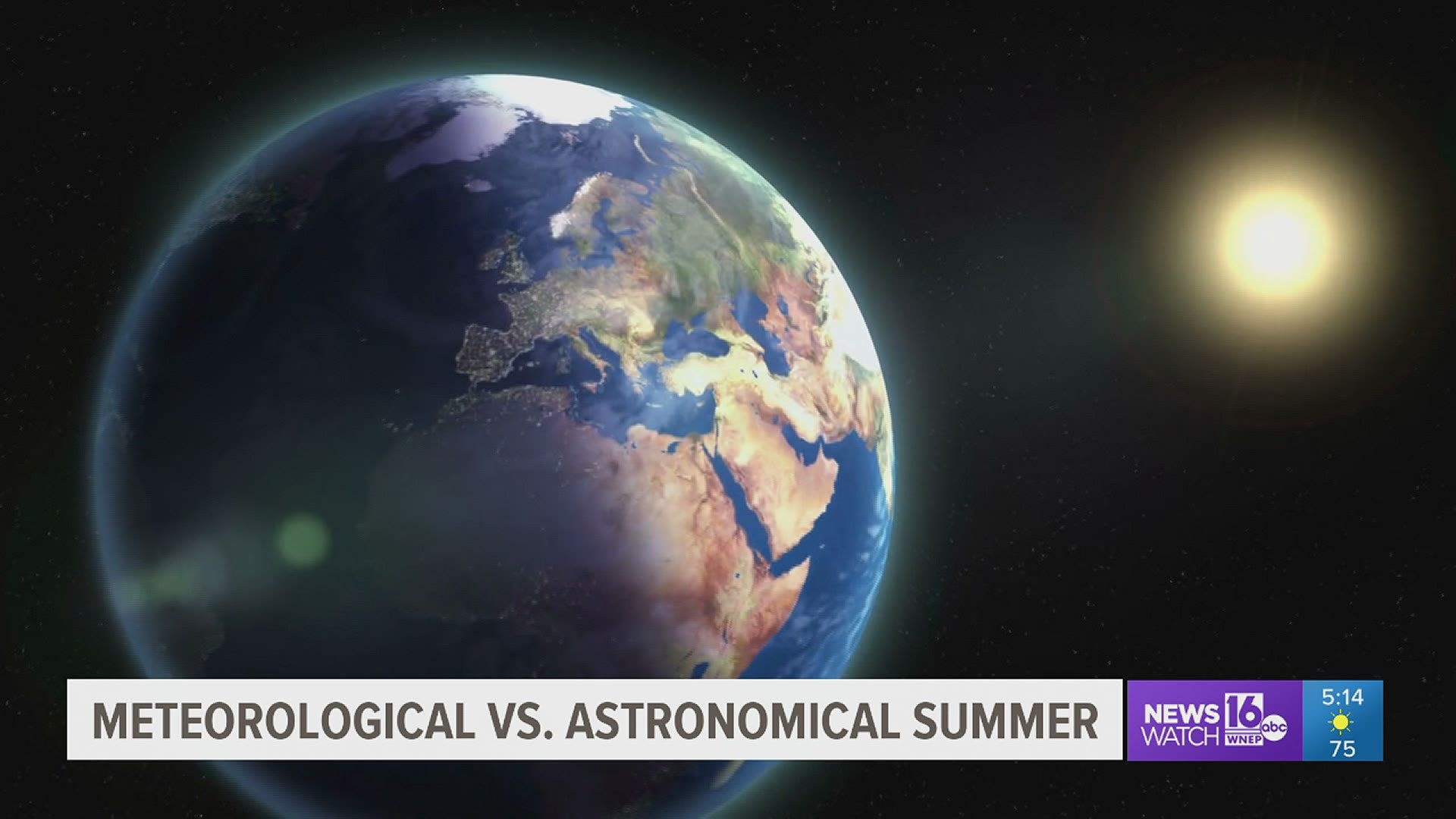SCRANTON, Pa. — Memorial Day weekend is often referred to as the unofficial start to summer. But this past Saturday and Sunday, it was colder in the Scranton area than it was on Christmas Eve and Christmas Day.
Most people would consider the official start to summer, the summer solstice when the sun is at its highest point in the sky in the Northern Hemisphere. That happens around June 21 each year.
For meteorologists, June 1 is considered the first day of summer because we use meteorological seasons instead of astronomical.
"Meteorological summer is based on the annual temperatures cycle, so our warmest months of the year coincide with meteorological summer," said David Nicosia, National Weather Service Meteorologist.
Having meteorological seasons helps meteorologists compare data from year to year. 2018 was one of the rainiest summers on record for the Scranton area. Last year was one of the warmest summers on record.
Looking at the dates from the start of June through the end of August makes comparing that data easier.
"We always average the months together; it's just easier that way. Instead of June 20th to July 20th, it's more convenient, it's June, July, and August are the three warmest months of the year," Nicosia explained.
The average high temperature for June 1 is 76 degrees; by the end of the month, the average high is 84. The summer solstice this year happens on Sunday, June 20, at 11:31 pm.
The Winter Solstice happens on Tuesday, December 21 this year. That means, if following astronomical seasons, it is technically fall up until four days before Christmas.

